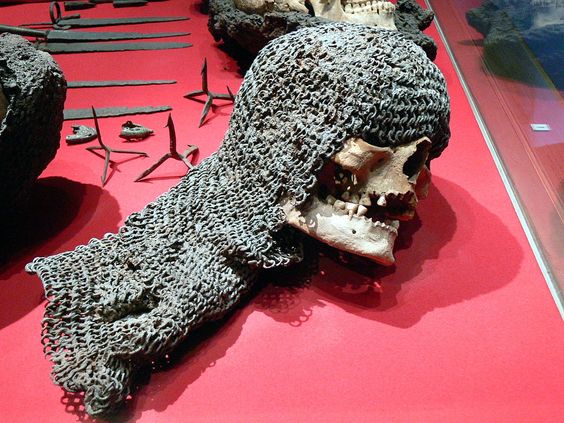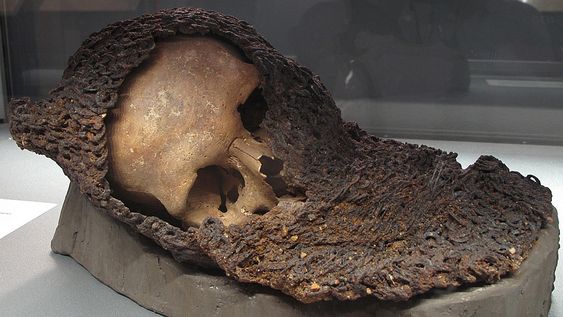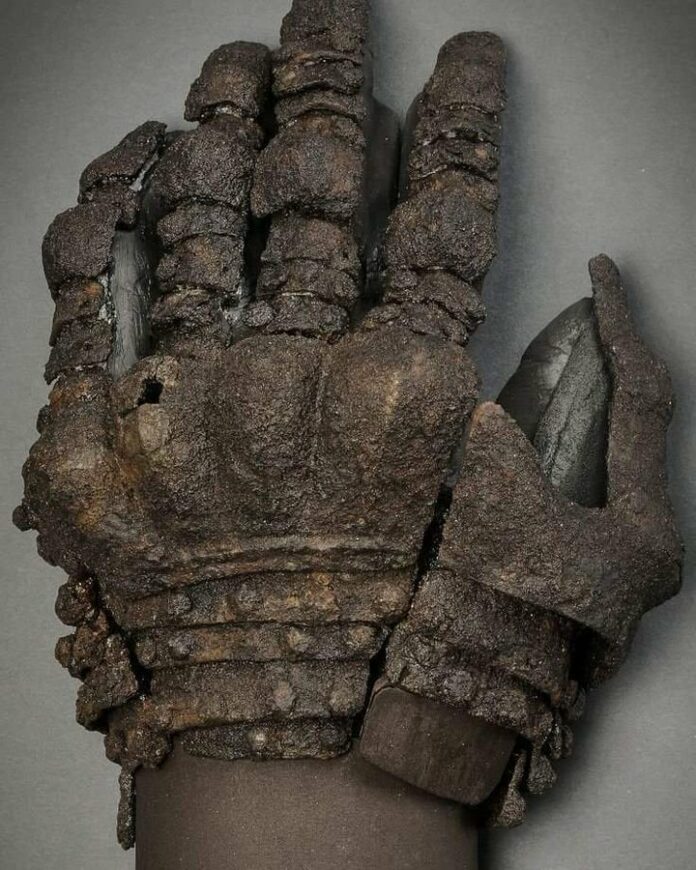Iron guntlet from a mass grave, battle of Visby, fought in July 1361 CE, on the Swedish Baltic island of Gotland, between invading Danish troops and the local, Gutnish, forces.
In July 1361, a fierce and decisive battle took place on the Swedish Baltic island of Gotland, known as the Battle of Visby. This brutal confrontation saw invading Danish forces clash with the local Gutnish troops, culminating in a catastrophic defeat for the defenders. The Danish victory was overwhelming, leading to the swift and tragic demise of many of Gotland’s inhabitants.

The aftermath of the battle was marked by an urgent need to dispose of the dead. The summer heat necessitated rapid burial, leading to the remarkable circumstance that many of the fallen were interred in their armor. This hasty approach to burial provided a unique and grim preservation of the battle’s immediate aftermath.
In the 1930s, an archaeological excavation of one of the mass graves from the Battle of Visby revealed a haunting sight. Over 1,000 skeletons were unearthed, many still clad in the armor they wore in their final moments. Among the many artifacts recovered was an iron gauntlet, a stark reminder of the intense and personal nature of medieval warfare.

The mass grave’s discovery offered invaluable insights into the equipment and conditions of 14th-century warfare. The armor found alongside the skeletons varied widely, indicating the diverse economic status of the combatants, from well-equipped knights to poorly armored peasants. This diversity highlighted the inclusive nature of the local defense force, composed of a broad cross-section of Gotland’s society.
The iron gauntlet, like other pieces of armor and weaponry found, speaks to the brutal reality of the battle. Such artifacts provide tangible connections to the individuals who fought and died, offering a poignant reminder of their sacrifice. The preservation of these items allows historians and archaeologists to piece together the events of the battle and the experiences of those who lived through it.

The Battle of Visby remains a significant historical event, not only for its immediate impact on Gotland but also for the broader insights it provides into medieval military history. The excavation of the mass grave has enriched our understanding of the period, shedding light on the social and military aspects of the time.
In conclusion, the Battle of Visby and the subsequent discovery of the mass grave in the 1930s serve as a powerful testament to the island’s turbulent past. The iron gauntlet and other artifacts recovered from the site offer a poignant glimpse into a world long gone, yet vividly remembered through the relics left behind. This chapter of history, though marked by violence and tragedy, continues to inform and fascinate, providing a crucial link to our collective medieval heritage.




